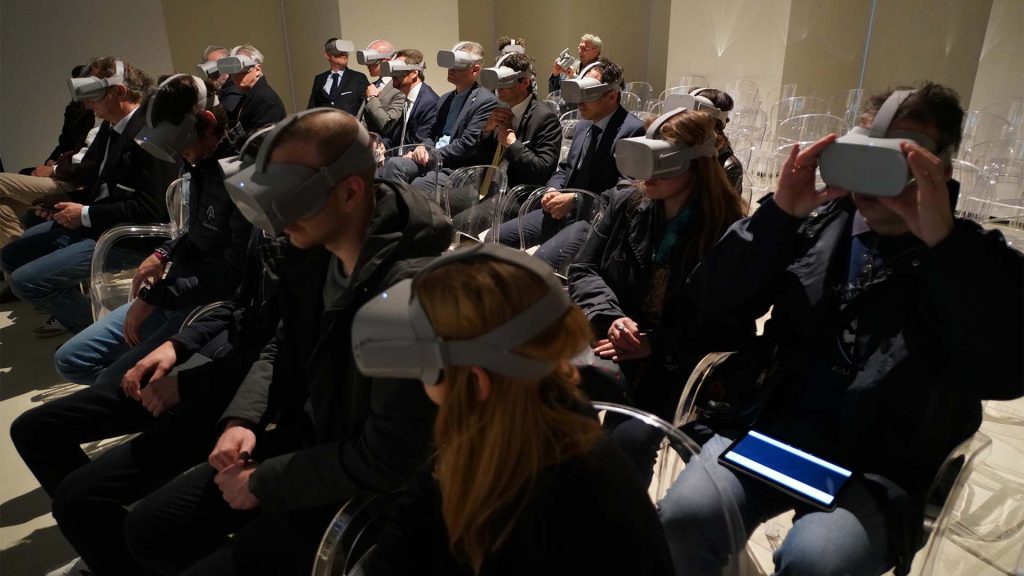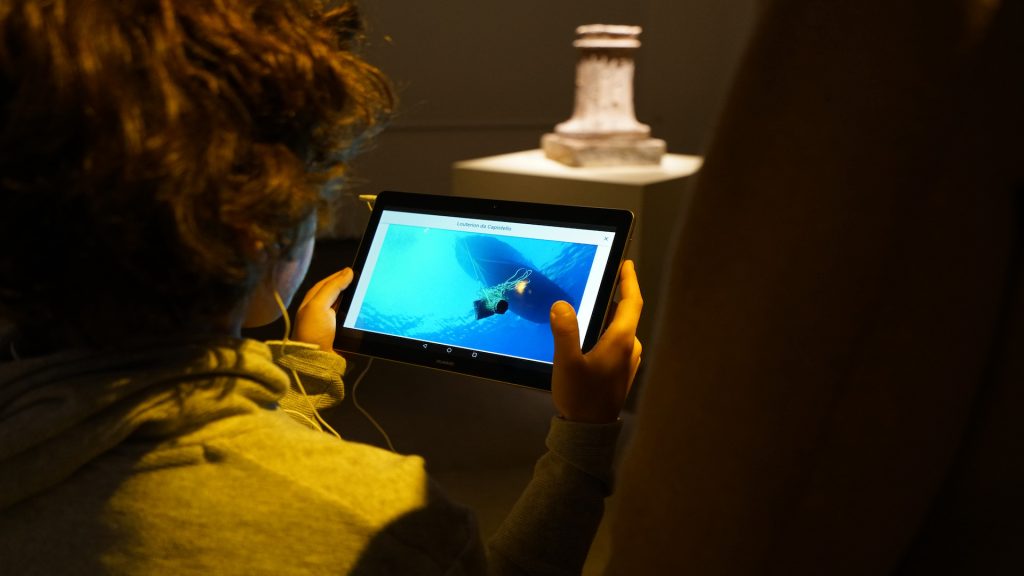
trend:
Coastal Tourism
year of foundation:
2021
founders:
Luca Palezza Carla Altieri Valeria Piras Francesco Spaggiari Justine Marie Vernet Francesca Altieri
Immersea creates immersive digital contents in VR and IR, that allow the users to enjoy through VR visors immersive underwater experiences.
The startup aims to simulate scuba diving and to raise awareness of the Mediterranean seabed. It collaborates with immersive exhibitions, events and guides for home entertainment, targeting the world of entertainment, tourism and cultural heritage.
meet the startup
Scuba diving does not always require an oxygen tank. Explore the seabed, the marine world and the deep-sea cultural heritage with two underwater explorers, a marine biologist and an archaeometrician. Immersea is using technology to fulfil a dream of many: to experience the depths of the sea first-hand. How? By making the inaccessible accessible; by recounting the beauty, history and secrets of underwater and remote places through virtual and augmented reality.
We asked Francesca Altieri, Project Manager of Immersea.
let’s start from the beginning, where does Immersea originate?
Immersea was created in 2019, during the pandemic, from an idea by Francesco Spaggiari and Luca Palezza, two underwater explorers who decided to turn their 20-year passion into an entrepreneurial project. The team grew very quickly, first when Justine Marie Vernet, an archaeometrician specialised in the study of ancient materials, joined the team. Next up was Carla Altieri, a marine biologist, followed by Valeria Piras, an expert in communication and storytelling, and me (Francesca Altieri) as fundraiser, sustainability specialist, and exhibition and event organiser.
The group further consolidated in the summer of 2020 as we began working together to draft the project for Invitalia’s Cultura Crea. A call for proposals we won in 2021 and after which we established the company.
Immersea is quite spread out; it originates between the Egadi and Aeolian islands but the team works from Rome to Friuli as far as France, with projects ranging from the Mediterranean to the Arab Emirates.
We are operationally based in the Archaeological Museum of Lipari, which is a special place to us: in 2019 Fondazione Monteparma produced [IN]ACCESSIBILE – STORIE DAGLI ABISSI, an exhibition on the Seas of Sicily between the Real and the Virtual, in which our immersive VR/AR content was used to tell the story of the findings of the Archaeological Museum of Lipari as well as their recovery process The exhibition was a success: 20,000 visitors in six months. Our relationship with the Museum has continued ever since.
what is the core of your work?
Our core business is not only content creation: which in our specific case is the documentation through special 3D 360°cameras of naturalistic and archaeological underwater sites. Around this content, for each of our customers we design the best fruition experience using innovative solutions like Augmented Reality Apps and immersive multi-projections with VR viewers. Thanks to the multidisciplinary skills of our team, all manufacturing processes are internalized, guaranteeing a very high level of product quality, significant savings in time and costs and infinite possibilities for customization.
WHO IS THE TARGET AUDIENCE FOR THIS CONTENT? WHAT IS YOUR MARKET?
We definitely target museums and cultural institutions, to which we offer turnkey content. But not only that, since we have a number of commercial agreements with private companies in Italy and abroad for on-demand production. Immersive videos and state-of-the-art viewing experiences are attracting a lot of interest. Few examples?
For a leading company in the cruise industry, we are working on creating immersive content that will allow you to experience and discover on board the seabed connected to the routes of the ship.
In Dubai, on the other hand, we are developing a package of innovative technological solutions for an important reality linked to the world of entertainment.
We started with the idea of creating a digital guide to the seas of Sicily (that will be available online next autumn), but the intention is to extend throughout Italy and then the Mediterranean. We have plenty of opportunities, and what distinguishes us from our competitors is precisely our ability to offer a ‘full package’, following the entire process: from the scuba dive to the creation of informative scientific content.
WHAT DO YOU EXPECT FROM FAROS?
We are the only start-up in the field of tourism and culture in the first edition, and for us this is an opportunity to structure and fine-tune a number of aspects concerning economics and finance, as well as to further reflect on important aspects such as assessing and reducing the environmental impact of our activities. The environmental issue is at the heart of our project. Immersea was born from a specific awareness, that of two explorers who love the sea. We want to bring the underwater world to the surface, recounting its beauty but also reporting on the major problems that affect it.
That is why we are very much committed to spreading Immersea’s content everywhere, but especially in schools. Raising awareness through knowledge is our guiding principle.
OBJECTIVES AND PLANS FOR THE FUTURE?
Many. Definitely expanding our content portfolio. The development of a diving simulator “Simarine” is also in the pipeline. We are going to reproduce a submarine with 2/3 stations, inside which one of our immersive experiences can take place. We are working on this with Triton, a leading American company in the production of bathyscaphe boats for recreational use; this would allow us to create a mobile container inside which one can enjoy our content, making the immersive experience accessible to all thanks to a reasonable ticket price.
Plus there is our web app, a platform that through geolocation will show and describe what is under the surface of the sea where users are, connecting what is on the surface with what is underwater. We would be very much happy to do this mapping on the whole of the Italian seabed.
Thanks to the networking events organised by the Faros programme, we had the chance to meet several blue economy players who are interested in learning more about our work and with whom we hope to establish new collaborations. There is so much to be done and so many opportunities to be seized.



